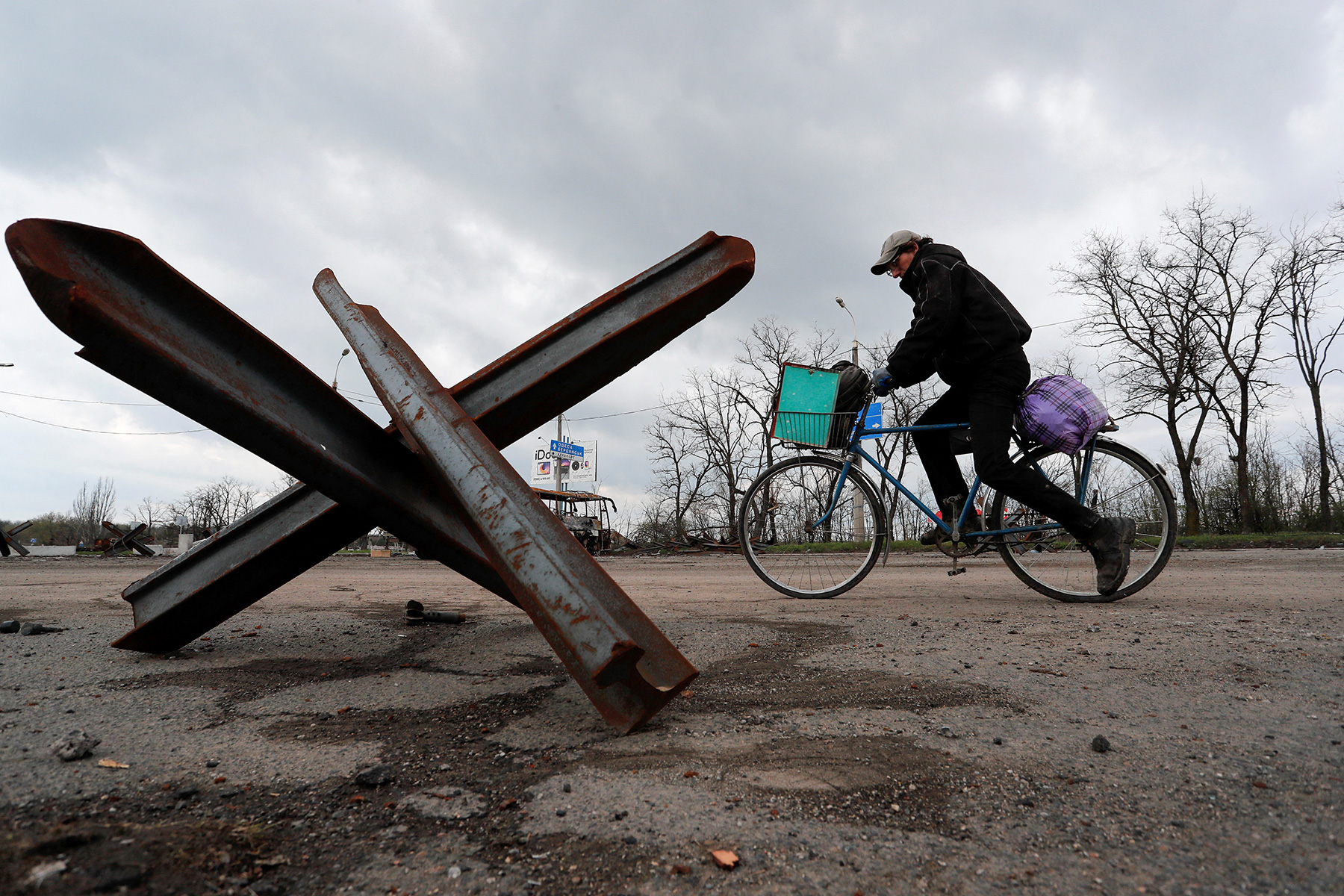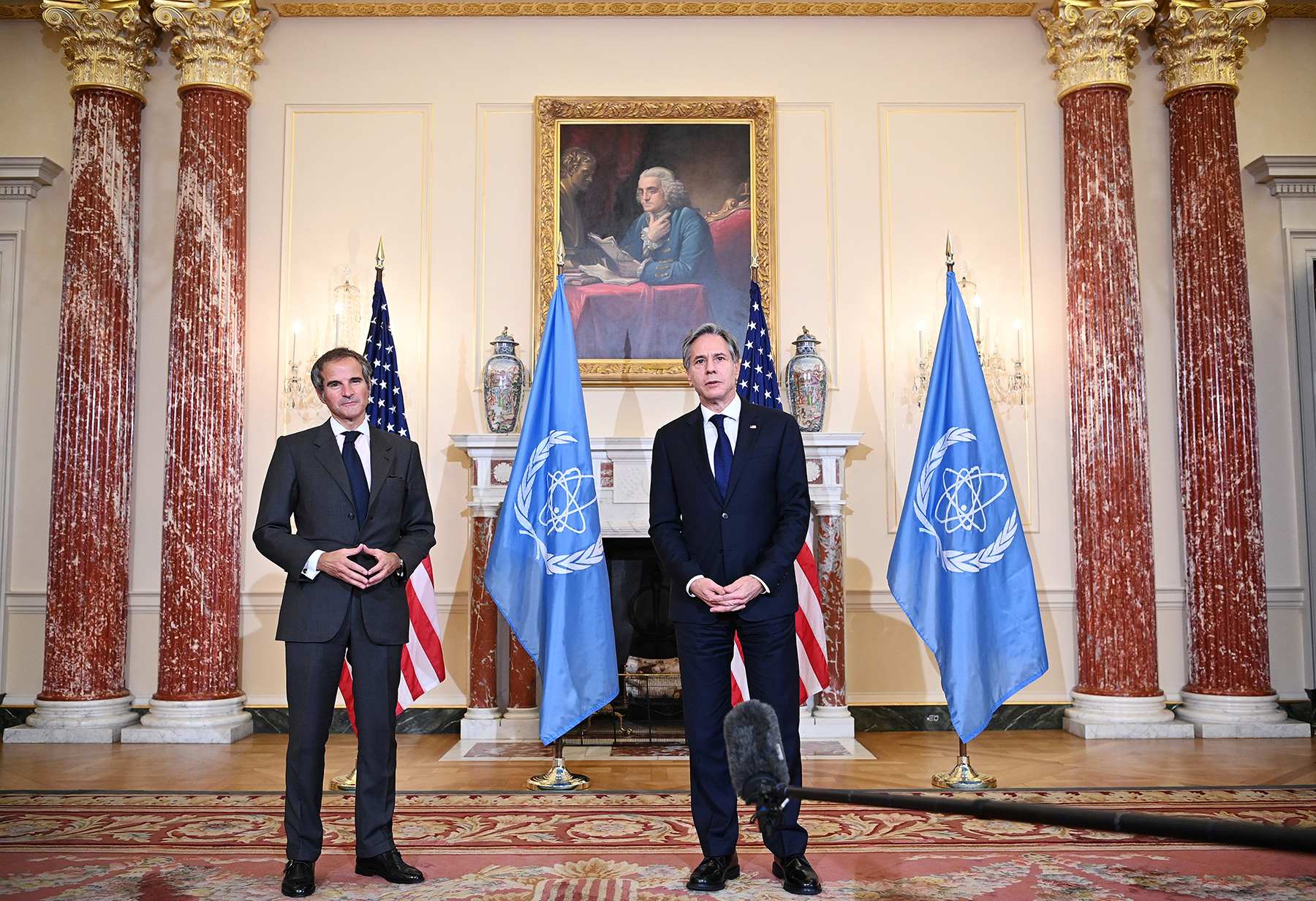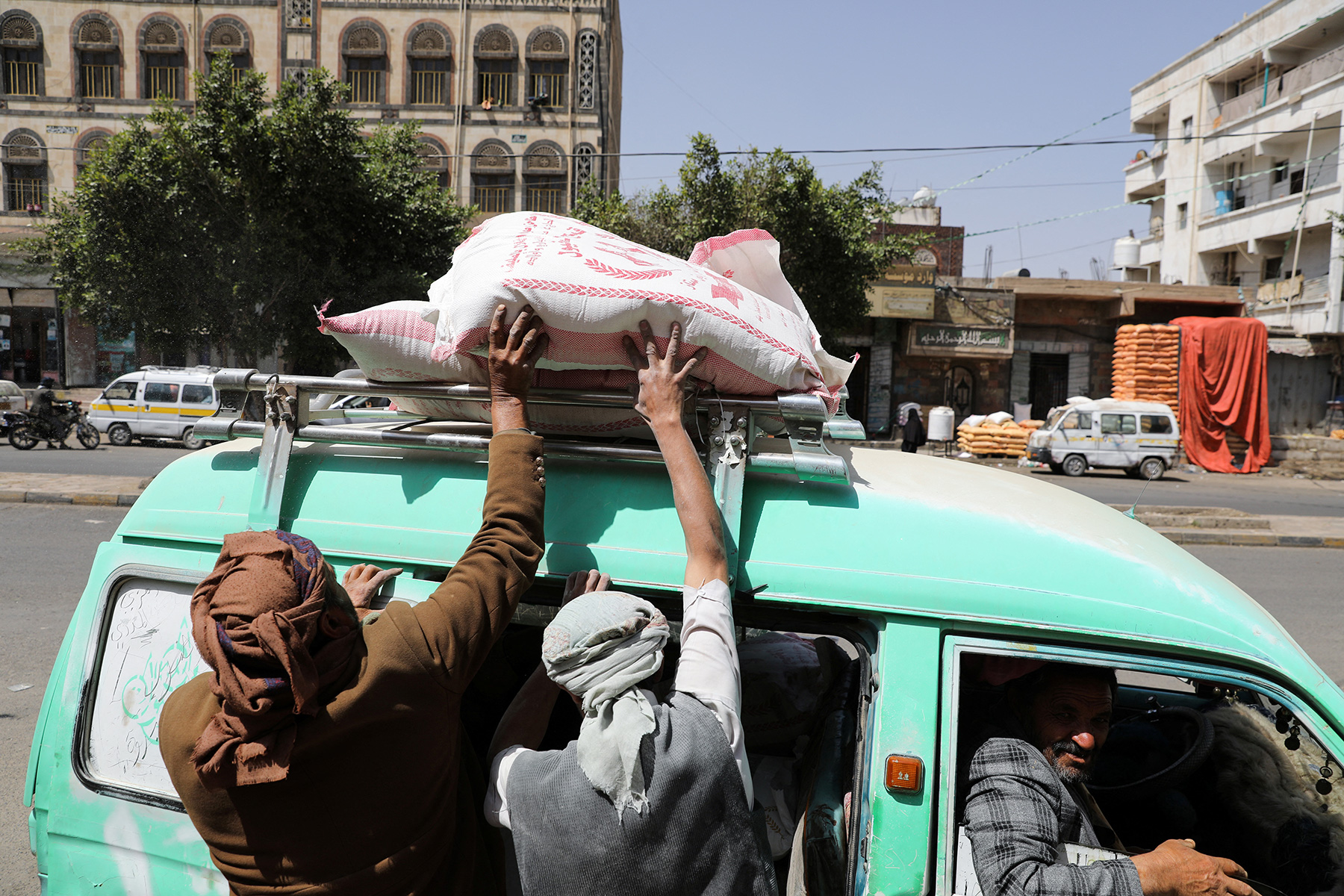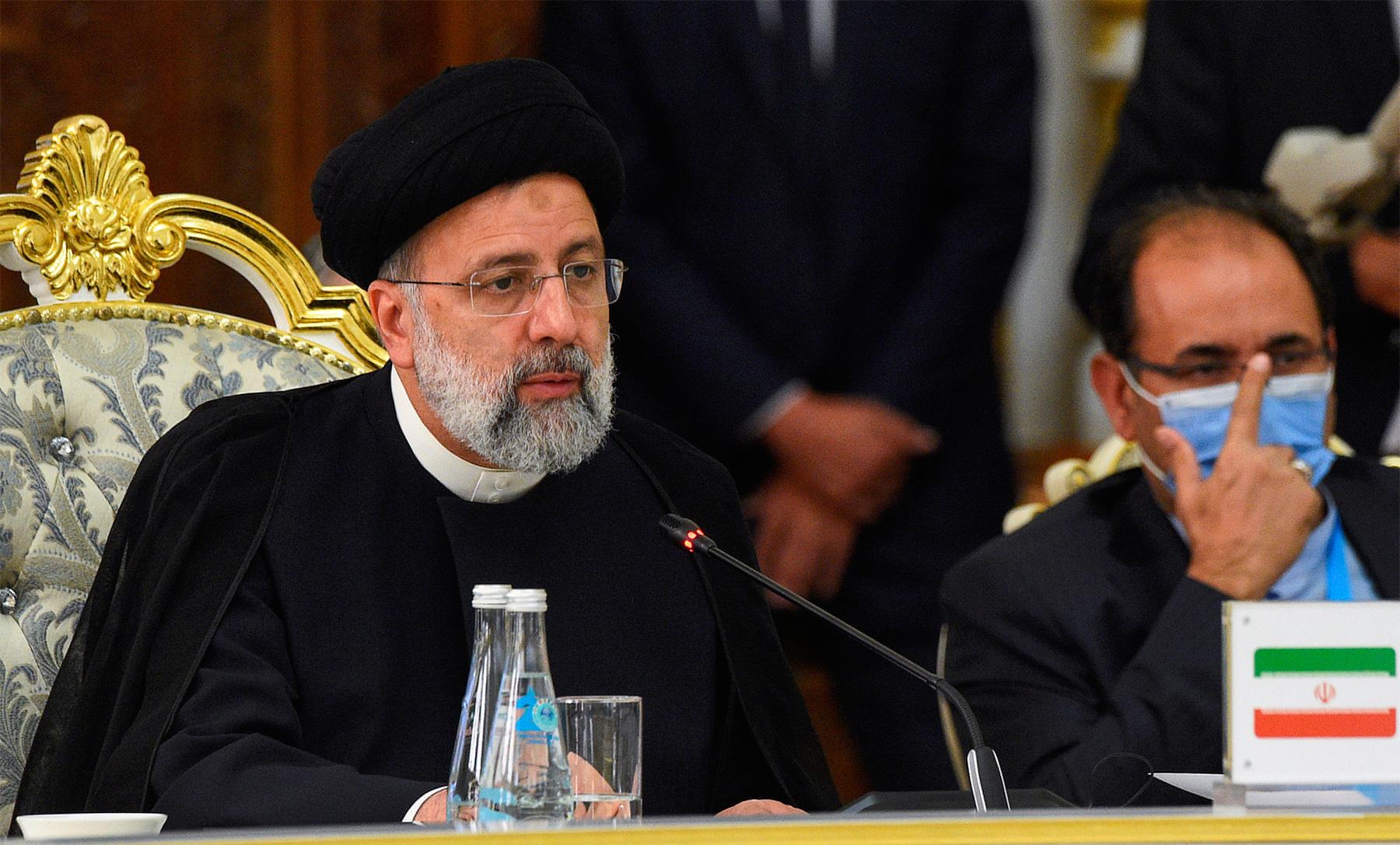As of today, the relations between Russia and Iran are almost set to transition to a new level. The situation, as it currently unfolds, offers little choice: people in both countries will look for opportunities for mutual cooperation. At the same time, outlines of new pockets for cooperation remain rather vague—apparently, the bilateral relations are at a transit stage.
Iran assumed a compromise position at the start of the operation in Ukraine. Tehran did not join the wave of international condemnation of Moscow, nor did it support Russia’s operation. Iran laid the principal blame for these developments at the door of the U.S. and NATO. At the same time, Tehran continues to call for a ceasefire and for talks between Russia and Ukraine, even offering its good offices. The response of the broader Iranian public was even less unequivocal. Therefore, enhancing Russia–Iran relations, particularly at the governmental level, could be met with a negative response from part of Iran’s society.
Potentially, Iran could take over Russia’s place on the hydrocarbons market—but this requires that the West-imposed sanctions against Iran first be lifted. Even then, Iran’s oil production is greatly restricted by its capacities. In order to ramp them up, Iran needs investment and equipment, which takes time and effort. As for gas, the issue boils down to Iran’s capacities to deliver gas to consumers, and these capacities are clearly underdeveloped. Therefore, talking about the wonderful prospects of Iranian producers amid Russia’s isolation would—so far—be premature.
The overall context of Russia–Iran relations looks a little more complex than reducing them to an inevitable rapprochement. The Iranian authorities, however, are consistent in their intent to bolster closer ties with Moscow—in that, they are guided by pragmatic considerations. Prospects remain optimistic, even though some circumstances cast a shadow over the promising picture.
Iran’s experience of 2012–2018—a most relevant period for today’s Russia—shows that economies, while lacking in dynamic and technologies, yield to structural transformations amid sanctions pressure. Iran’s case is the only comparable example of a similar financial war launched by the U.S. and Europe. This experience is all the more relevant as Iran and Russia share many similarities. It is not only the matter of them both exporting oil and gas, this is blatantly obvious. Alongside this, both states can boast large industrial sectors, mostly working for their domestic markets. Additionally, despite common corruption and reliance on economic rent, key institutions of the two states demonstrate major technological sophistication.
Iran demonstrates that the repercussions of sanctions cannot be neutralized in full, whether short-term or long-term. However, Tehran managed to minimize sanctions pressure in the critical sectors of its economy. There are reasons to believe that Russia will withstand the pressure, too. Russia’s principal indicators make it stronger than was Iran when the financial war began. However, putting someone’s experience to good use requires careful studies.
As of today, the relations between Russia and Iran are almost set to transition to a new level. The situation, as it currently unfolds, offers little choice: people in both countries will look for opportunities for mutual cooperation. At the same time, outlines of new pockets for cooperation remain rather vague—apparently, the bilateral relations are at a transit stage. This is particularly relevant for Russia, with Moscow only beginning to grasp the new economic and political realities it will be living in in the near future. Iran’s main value, therefore, lies not so much in trade and economic cooperation, even though this certainly remains of importance. The main thing Iran can offer Russia right now is the experience of facilitating development under harsh Western sanctions.
Carried by the momentum
In 2022, the Russia–Iran interactions were marked by two important visits. The first was Iran’s President Ebrahim Raisi coming to Moscow in January 2022. Back then, Iran attempted to position this visit as a diplomatic breakthrough for the new head of government, while critics pointed out that few radically new ideas and arrangements resulted from the talks.
Russia’s Deputy Prime Minister Alexander Novak’s May visit was paid to Iran in a somewhat different situation. On the one hand, the level of the talks was lower than during the President’s visit in January. On the other hand, the Russian delegation traveled to Iran amid unprecedentedly harsh Western sanctions imposed on Russia in the wake of the Ukrainian developments. Today, everyone and their brother is talking about Moscow’s future being contingent on the relations with China and Iran, which meant that Russia certainly saw Novak’s visit through quite a different lens.
Nonetheless, this visit’s publicized outcomes logically follow from the earlier trends in the bilateral relations, emerging before the West’s war of sanctions against Russia. Exploring ways to build up freight traffic via the Caspian Sea, holding discussions on lifting the ban on importing Iran’s dairy products, contemplating the prospects of exporting Russian poultry, moving forward with talks on investment into Iran’s oil and gas sector and on swap deliveries of oil and gas—these are all individual issues with tailored decisions to be arrived at. Seemingly, talks on wheat deliveries promise tangible outcomes. However, Russia has been one of the major exporters of wheat before, so this is nothing particularly new. By the end of 2021, agricultural products accounted for nearly 80% of the Iranian-Russian trade turnover.
Bolstering trade in national currencies may appear a more fundamental issue. However, this process was set in motion a while ago—in late 2021, over 70% of trade transactions between Russia and Iran were nominated in national currencies. The long-awaited integration of Shetab and Mir payment systems, in spite of some positive shifts, remains on the table for discussion.
The prospect of a full-fledged free trade area agreement (FTA) with the EAEU is probably the largest change. It is likely to be concluded as early as 2022. This agreement will then replace the interim FTA agreement, which entered into force on October 27, 2019, producing a positive effect on bilateral trade. In this respect, things, too, are moving on a schedule established long before: talks on the full-scale agreement were to be completed no later than three years after the interim agreement on an FTA went into force.
We should note the positive dynamics of the recent economic cooperation between the two nations. In 2021, Russia–Iran trade volume set a record of over USD 4 bn. Political developments were largely positive as well. With increasing frequency, Russia and Iran found themselves on the same side on the international stage, with the most vivid example being the nuclear deal. Besides, Iran’s accession to the SCO in 2021 was primarily spearheaded by Russia. On the whole, the countries hit upon an approach that allows them to concentrate on their coinciding interests, steadily building up economic cooperation. Early 2022 can be regarded in the same light: Russia–Iran trade turnover in the first quarter grew by 10%.
A new stage in trade and economic relations is virtually inevitable. Sanctions imposed on Russia are there to stay. Talks on re-launching the nuclear deal between Tehran and Washington also hit a dead end, and chances to find a way out are dwindling.
Even if the arrangements proclaimed by political elites are not yet entirely in line with the times, the principal change is already obvious. On his Iranian visit, Novak was accompanied not only by a delegation of officials but also by a large cohort of entrepreneurs, many of whom had never given a thought to the Islamic Republic before. May 2022 became a test entry into Iran for many Russians. New ideas were voiced on importing Iranian medications, construction materials, interactions between book industries, deliveries of spare parts. Finally, over the last few months, Russians have increasingly shown interest in Iran, which has been reflected in the media. These developments evidence a qualitative shift, which is bound to impact the bilateral relations.
It is another matter than most “trailblazers”, who came to do business with Iranians, will soon face major difficulties: differences in business cultures, problems with payments, disorganized logistical setups, red tape. Iran is not the kind of country that businesses can enter quickly and easily. Most likely, many of the newcomers will be disappointed at the sight of first problems to abandon the idea of cultivating new ties. Only the most inventive and persistent ones will stay, or else those who see Iran as the only option amid the current restrictions. Still, this might be enough for a manifold increase in trade and economic integration between the two countries in the future.
Not only cooperation
Iran assumed a compromise position at the start of the operation in Ukraine. Tehran did not join the wave of international condemnation of Moscow, nor did it support Russia’s operation. Iran laid the principal blame for these developments at the door of the U.S. and NATO. At the same time, Tehran continues to call for a ceasefire and for talks between Russia and Ukraine, even offering its good offices.
The response of the broader Iranian public was even less unequivocal. A good part of the population was openly negative about Russia’s operation in Ukraine. It is particularly true for the urban middle class, where media is dominated by Western channels broadcasting in Farsi—such as the BBC Persian Service, Radio Farda, Iran International, etc. There even were small anti-Russian protests in Tehran. Western media were accompanied by reformist outlets, while conservative media and pro-government experts broadcast a stance rather close to that of the government.
Therefore, enhancing Russia–Iran relations, particularly at the governmental level, could be met with a negative response from part of Iran’s society. For Iran, it is largely natural: for instance, there had been rallies against a rapprochement with China, even though economically, Tehran had virtually no alternative to Beijing.
Another notable response was claims produced by some media and posted on social networks, suggesting that Iran may derive major benefits from anti-Russian sanctions by assuming Russia’s place on the hydrocarbons market. So far, however, the reverse seems to be true. There are reports of exports of Iran’s oil to China sharply falling over the situation in Ukraine. Beijing prefers Russian suppliers, who are now forced to sell their oil with significant discounts. A similar situation is emerging on the gas market, where Asia’s interest in Tehran may notably fall on account of Moscow’s pivot to the east.
Potentially, Iran could take over Russia’s place on the hydrocarbons market—but this requires that the West-imposed sanctions against Iran first be lifted. Even then, Iran’s oil production is greatly restricted by its capacities. In order to ramp them up, Iran needs investment and equipment, which takes time and effort. As for gas, the issue boils down to Iran’s capacities to deliver gas to consumers, and these capacities are clearly underdeveloped. Therefore, talking about the wonderful prospects of Iranian producers amid Russia’s isolation would—so far—be premature.
The overall context of Russia–Iran relations looks a little more complex than reducing them to an inevitable rapprochement. In some areas, competition is mounting instead. Moreover, Iran’s public opinion concerning Russia is not entirely unequivocal. The Iranian authorities, however, are consistent in their intent to bolster closer ties with Moscow—in that, they are guided by pragmatic considerations. Prospects remain optimistic, even though some circumstances cast a shadow over the promising picture.
Experience as the main asset
Iran’s potential as Russia’s economic partner far exceeds the current level. The Islamic Republic could well step in some of the vacant niches in various sectors of Russia’s economy, while Iran could also import a greater range of Russian commodities. Besides, Iran is a market as such, with many vacant niches where Russian investors can launch their enterprises.
At the same time, as a country, Tehran will never approach the scale of opportunities offered by such countries as China or India. There is one area, though, that makes Iran a unique country for Russia, and this is Iran’s own experience.
Today, Russia is locked in an unprecedented economic confrontation with the Western nations. Iran’s case is the only comparable example of a similar financial war launched by the U.S. and Europe. This experience is all the more relevant as Iran and Russia share many similarities. It is not only the matter of them both exporting oil and gas, this is blatantly obvious. Alongside this, both states can boast large industrial sectors, mostly working for their domestic markets. Additionally, despite common corruption and reliance on economic rent, key institutions of the two states demonstrate major technological sophistication.
Generally, Iran’s experience of 2012–2018—a most relevant period for today’s Russia—shows that economies, while lacking in dynamic and technologies, yield to structural transformations amid sanctions pressure. Moreover, timely adjustments may allow the country to resume moderate economic growth within a year. Iran demonstrates that the repercussions of sanctions cannot be neutralized in full, whether short-term or long-term. However, Tehran managed to minimize sanctions pressure in the critical sectors of its economy. There are reasons to believe that Russia will withstand the pressure, too. Russia’s principal indicators make it stronger than was Iran when the financial war began.
However, putting someone’s experience to good use requires careful studies. In other words, exploring the contemporary Iran is vital for Russia’s healthy development. These studies cannot be confined to merely economic aspects. Iran’s experience demonstrates that sanctions are a comprehensive problem. For instance, environmental challenges have become more pressing amid the country’s attempts to circumvent sanctions, which is certainly a significant by-product of sanctions pressure.
Finally, Iran’s principal economic problems tend to stem from poor political decisions rather than from the sanctions. For instance, this has to do with extremely inefficient social policies—one of the world’s lowest gas prices, subsidized water and electricity not only fail to resolve social problems but also create imbalances whose negative effects far exceed the consequences of financial restrictions. What Iran’s example demonstrates is that the road to left-wing populism quickly drags one into a dangerous whirlpool, and it is rather hard to find a way out of it.








